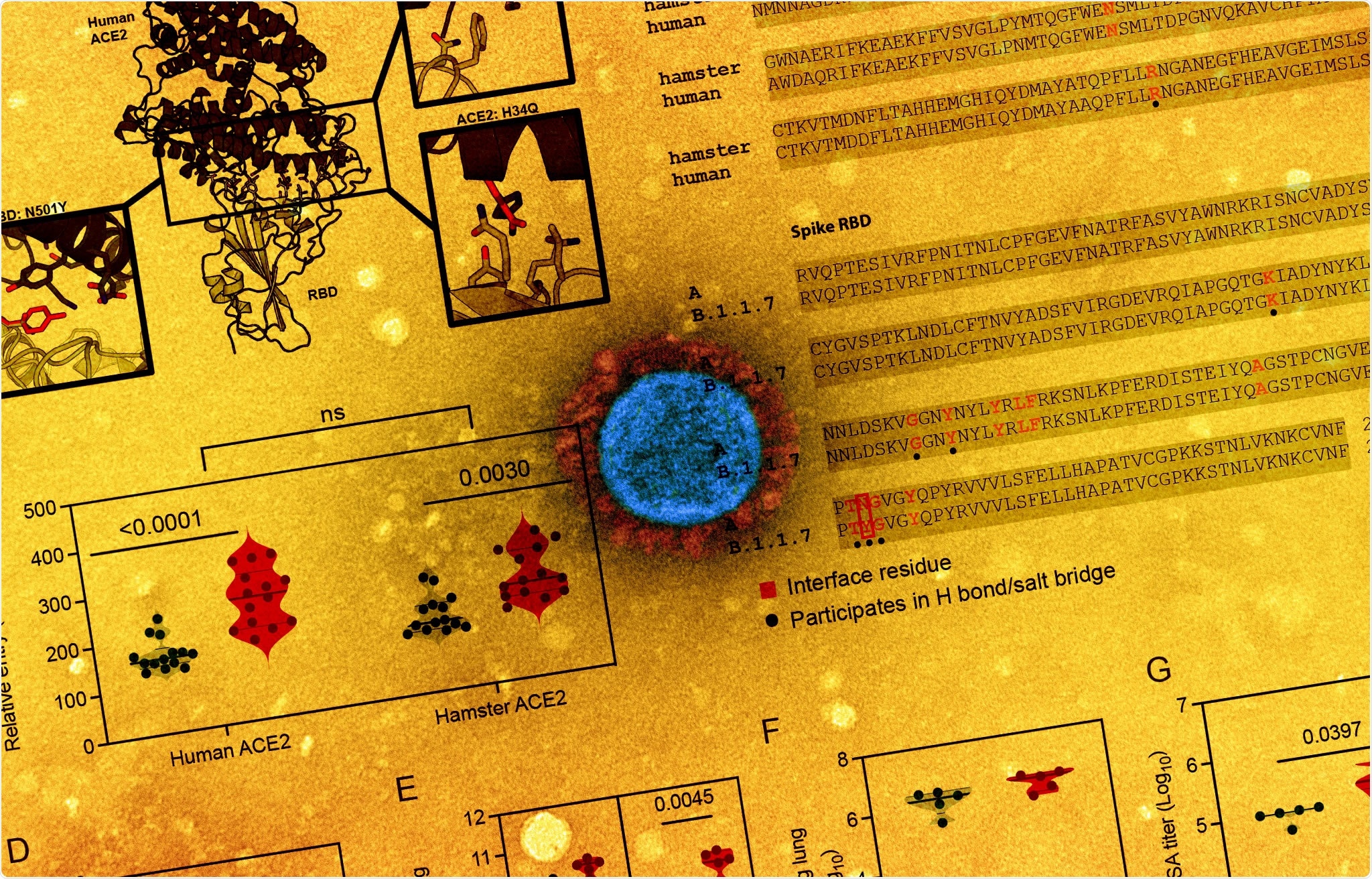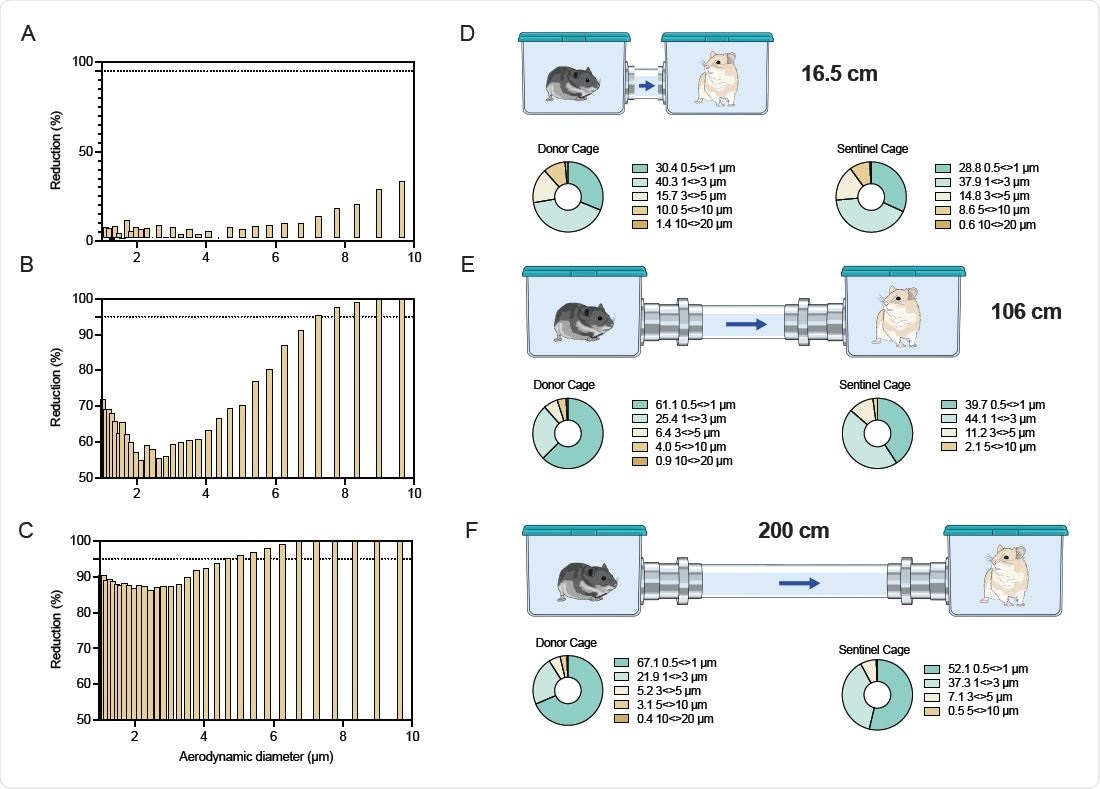NIH scientists demonstrate efficient aerosol transmission of SARS-CoV-2 in hamsters
Researchers in the United States have demonstrated the efficient aerosol transmission of severe acute respiratory syndrome coronavirus 2 (SARS-CoV-2) – the agent that causes coronavirus disease 2019 (COVID-19) – in a hamster model.
The team from the National Institute of Allergy and Infectious Diseases in Hamilton, Montana, specifically designed novel transmission cages to investigate aerosol transmission across a range of distances.
“Epidemiological studies in humans strongly suggest that aerosol transmission plays a major role in driving the SARS-CoV-2 pandemic,” says Vincent Munster and colleagues. “Yet formal proof of aerosol transmission of SARS-CoV-2 has not been provided and would rely on demonstration of long-distance transmission in the absence of other transmission routes.”
Now, the team has demonstrated that at a distance of 2 meters, only aerosol particles (less than 5µm in diameter) traversed between cages.
Aerosol transmission was confirmed for all eight sentinels after 24 hours of exposure and even when the exposure time was limited to one hour, thereby showing the efficiency of this transmission route.
Furthermore, the researchers found that airborne transmission of the B.1.1.7 (alpha) variant of SARS-CoV-2 outcompeted that of the lineage A variant.
The team says the findings underscore the ongoing need to assess novel variants and the development of preemptive transmission mitigation strategies.
A pre-print version of the research paper is available on the bioRxiv* server, while the article undergoes peer review.

Detailed data on airborne transmission of SARS-CoV-2 is lacking
Epidemiologic data suggest that airborne transmission, which refers to a combination of both large droplet and aerosol transmission, is the main route through which SARS-CoV-2 is spread.
The general description given by the World Health Organization is that large droplets traverse short distances and deposit in the upper respiratory tract. In contrast, aerosol particles (<5µm) can traverse long distances and settle in the lower respiratory tract.
Studies of the influenza A virus have elucidated its airborne potential and discussed the relative contribution of droplets versus aerosols, as well as the site of exposure.
“Similar data for SARS-CoV-2 is currently unavailable,” says Munster and colleagues. “Whereas several SARS-CoV-2 transmission studies in hamsters and ferrets have been performed, none of these studies were able to differentiate between large and small droplet transmission.”
In fact, no study has yet demonstrated the potential for true aerosol transmission of SARS-CoV-2 particles less than 5µm in diameter, they add.
What did the researchers do?
The team designed a novel transmission cage model that they used to investigate the relative aerosol transmission efficiency of SARS-CoV-2 variants B..1.1.7 (alpha) and lineage A in Syrian hamsters.

At a distance of 2 meters, only particles less than 5µm in diameter traversed between the cages.
After 24 hours of exposure, aerosol transmission was confirmed in all eight sentinels studied (4 for each variant). This transmission was also confirmed when the exposure time was limited to one hour.
“We present the first qualitative analyses of the efficiency of transmission, showing that even within one hour, transmission can occur at a distance of 200 cm between Syrian hamsters,” writes Munster and colleagues.
Transmission occurred via true aerosols
Only 2.0% and 0.5% of particles found in the sentinel side were 5µm or more in diameter at 106cm and 200 cm distance, respectively.
This strongly suggests that the transmission observed in these cages occurred via true aerosols, says the team.
This is an important finding, given that conclusive epidemiologic evidence for the aerosol transmission of SARS-CoV-2 is currently still lacking and that particles of less than 5µm are expected to reach the respiratory bronchioles and alveoli. It has also been suggested that direct deposition into the lower respiratory tract may decrease the necessary infectious dose.
Interestingly, the study also found that the B.1.1.7 variant exhibited a transmission advantage over lineage A in a dual infection experiment.
What do the authors advise?
Munster and colleagues say that together, the data suggest that the infectious dose of B.1.1.7 required for successful transmission may be lower than that of the lineage A virus.
“The experimental proof for true aerosol transmission and the increase in the aerosol transmission potential of B.1.1.7 underscore the continuous need for assessment of novel variants and the development or preemptive transmission mitigation strategies,” they write.
“In the light of limited global vaccine coverage and the potential emergence of escape mutants, ventilation, and air disinfection, face masks and social distancing, should still be considered essential tools in COVID-19 exposure and transmission risk mitigation strategies,” concludes the team.
*Important Notice
bioRxiv publishes preliminary scientific reports that are not peer-reviewed and, therefore, should not be regarded as conclusive, guide clinical practice/health-related behavior, or treated as established information.
- Munster V, et al. Increased aerosol transmission for B.1.1.7 (alpha variant) over lineage A variant of SARS-CoV-2. bioRxiv, 2021. doi: https://doi.org/10.1101/2021.07.26.453518, https://www.biorxiv.org/content/10.1101/2021.07.26.453518v1
Posted in: Medical Science News | Medical Research News | Disease/Infection News
Tags: Allergy, Coronavirus, Coronavirus Disease COVID-19, Disinfection, Infectious Diseases, Influenza, Pandemic, Research, Respiratory, SARS, SARS-CoV-2, Severe Acute Respiratory, Severe Acute Respiratory Syndrome, Syndrome, Vaccine, Virus

Written by
Sally Robertson
Sally first developed an interest in medical communications when she took on the role of Journal Development Editor for BioMed Central (BMC), after having graduated with a degree in biomedical science from Greenwich University.
Source: Read Full Article
